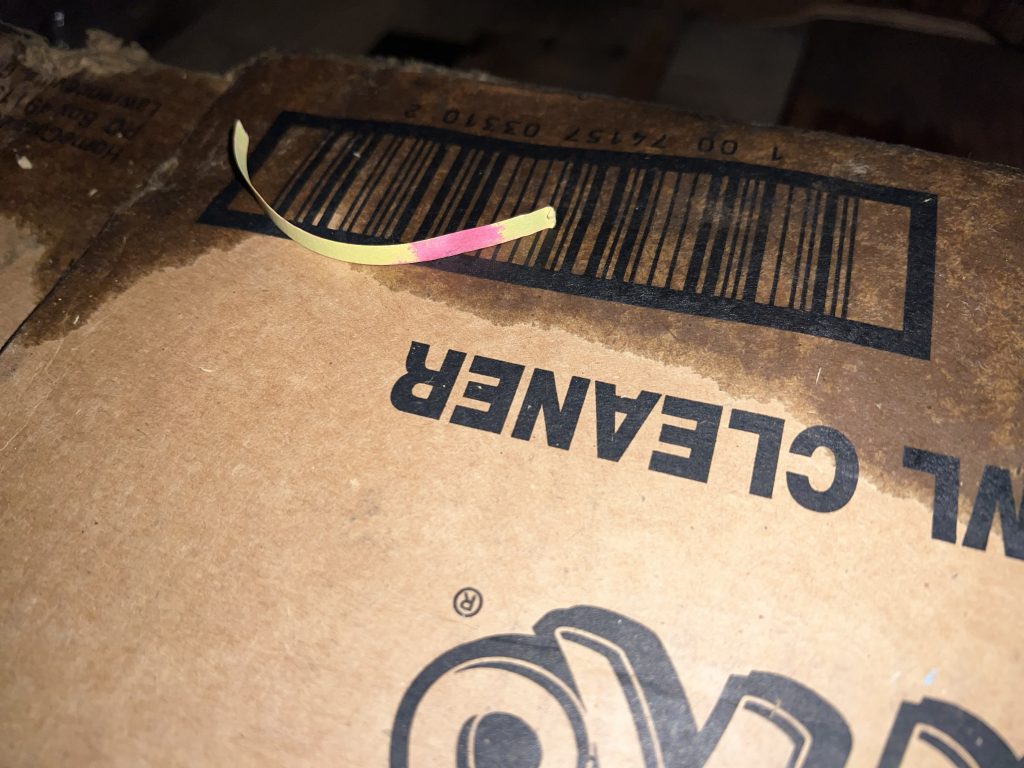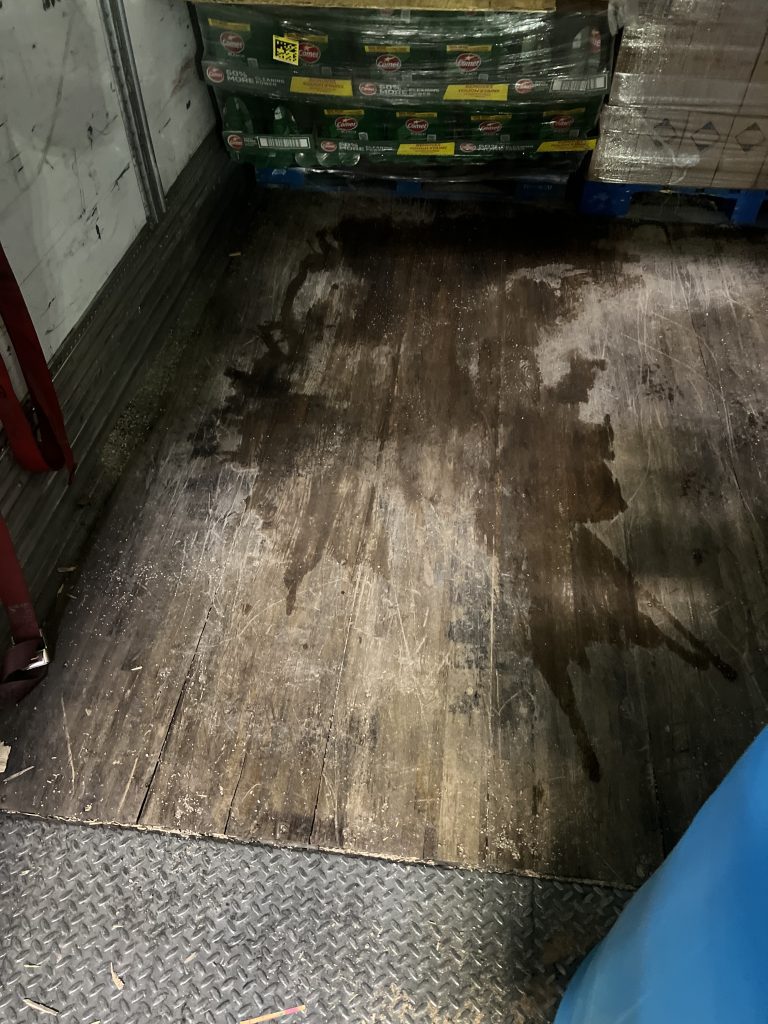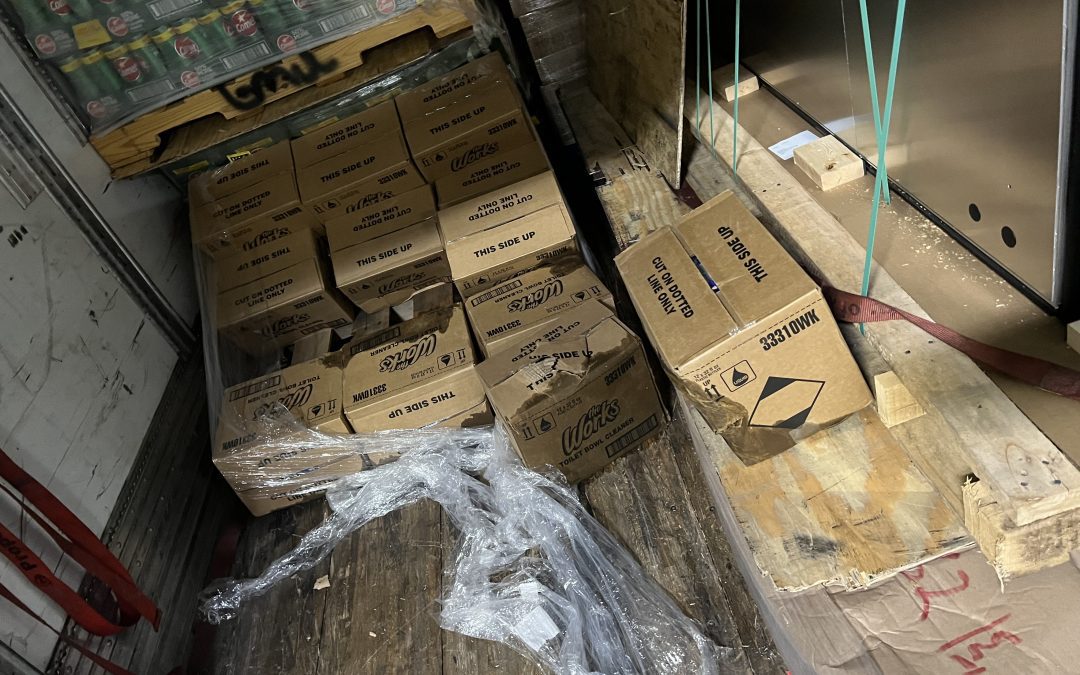Our Emergency Response Vehicles for chemical leaks are pre-loaded with 90% of the equipment needed for any emergency situation.
In September 2023, around midnight, the largest transportation company in the world had a warehouse dock chemical leak at one of its Central Illinois terminals. A cardboard box that had been full of toilet-bowel cleaning bottles had spilled onto a trailer floor in the warehouse dock. Despite the terminal being 90 minutes away from HazChem’s home base in Addison, IL, HazChem arrived on site within 103 minutes from getting the call for help with this chemical leak. We pride ourselves in emergency rapid response services and also specialize in warehouse dock spill cleaning. We are available 24 hours a day, precisely for this reason.
-
-
- Call Came in around midnight
- HazChem departs to the site in less than 15 minutes of receiving the call, due to emergency trucks already pre-loaded
- Once on site, PH test reveals spill is dangerous chemical leak
- Protective suits and air purifying respirators are implemented
- HazChem crew neutralized the flammable material with water and sodium bicarbonate and Universal Pads
- Leaking bottles put into 55 Gallon Open-Top Poly drum.
- 2nd PH test shows green: spill neutralized
-
A Small Chemical Leak Can Still Be Hazardous

“The spill on the trailer floor was about 6 feet by 6 feet,” said HazChem Co-Owner Chris Johnson. “Most of the emergency spills we get called for on any given night are usually larger than that. But we had been told that this particular product contained dangerous chemicals, that it was hazardous.” Once on-site, the HazChem crew manager conducted a PH test. “Simply put,” said Johnson, “a PH test determines the level of toxicity of a spill. The ideal color that one wants to see with a PH paper strip is green, signifying neutral. If the PH paper comes up red or blue, you are dealing with a hazardous spill — and then certain precautions must be taken.” Even a small chemical spill is dangerous if the chemical leak is hazardous.
Since the PH paper used in this test showed up red, the HazChem crew donned protective suits and air purifying respirators. The crew used a 5-gallon bucket and dropped in water and sodium bicarbonate, usually an effective neutralizer for this type of flammable material. The crew grabbed all the affected bottles and neutralized each one with Universal Pads, which first was dipped into the water/sodium bicarbonate mixture. The leaking bottles were put into a 55-gallon Open-Top-Poly drum as waste. The neutralized bottles that weren’t damaged were put on the dock floor.

Flammable Materials Must be Neutralized
The crew then poured the mixture into the spill on the trailer floor, worked it in with squeegees, and then dried up the liquid with pads. We put all contaminated cardboard into a 55-gallon Open-Top-Poly drum as waste. The crew put the non-damaged bottles into a different drum so this product could be reshipped by HazChem’s client. It was now time for another PH test at the spill area on the trailer floor. The test paper showed green. “The spill had been neutralized and that’s a major part of the cleanup,” Johnson said. “At that point, it was safe for terminal employees to be close to the area. Our crew could then remove their protective gear, including the masks.
Safe, Effective Warehouse Dock Trailer Cleanup
“This wasn’t a complicated cleanup for us at all. But I was pleased our crew handled the cleanup effectively, relatively quickly (30 minutes on-site), and no terminal employee nor HazChem crew member was ever hurt or in any danger. Our client was pleased. “Becoming the top transporter in the world is an outstanding accomplishment — and we’re very proud this company trusts HazChem to clean up its spills.”
What to do if a dock spill occurs?
If a spill occurs at your dock, Identify the hazardous material(s) by consulting shipping documents, labels, or material safety data sheets (MSDS). Assess the extent of the spill and potential risks, including fire, explosion, toxicity, or environmental impact. If the spill poses an immediate threat to human health or the environment, initiate emergency response procedures, including evacuation if necessary. Contact HazChem emergency services immediately for further guidance. You may need to establish a perimeter around the spill area to prevent unauthorized access and ensure personnel safety. We are open 24 hours a day to assist, and your call is answered by an employee in the US, not an answering service or voicemail. View our Emergency Services page, or Download our Services Brochure PDF.

